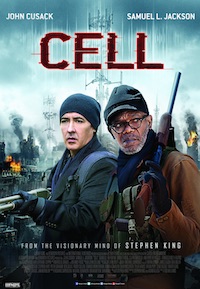 Trump’s going directly to the public, almost never having a news conference, a tactic also used by Hillary Clinton, and the focus put on the two-edged sword of cellphones/computers and the web, have a lot of meaning for both journalists and PR.
Trump’s going directly to the public, almost never having a news conference, a tactic also used by Hillary Clinton, and the focus put on the two-edged sword of cellphones/computers and the web, have a lot of meaning for both journalists and PR.
Powers of Press/PR Shrink
There’s no doubt both industries have lost lots of their powers in recent years. The number of reporters has shrunk along with ad revenues. Both Gallup and Pew now put confidence in media down around 20%. It used to be in the 70’s.
Media that bet heavily on Clinton winning the presidency were red-faced when the results became known. New York Times publisher Arthur Sulzberger Jr. published a half-hearted apology for the almost non-stop attacks on the Trump candidacy. NYT’s estimate that Clinton had an 84% chance of winning, made on the day of the election, caused some women to think there was no need to vote.
NYT is an example of media shrinkage. It just told employees it will lease eight floors of its offices at 620 Eighth ave. at 42nd st., saying the space was “too expensive” and is not needed. Hundreds of employees have been laid off or retired in the past several years. NYT sold its space in the building in 2009 for $225 million and leased it for 15 years.
Zombie-Like Behavior at PRSA
Twenty silent PRSA delegates, marching to cellphone commands, harassed this writer at the 2010 Assembly as we tried to interview Art Stevens, who with Richard Edelman and Dave Rickey, had led a move to break the monopoly of APRs on the national board. It failed 172-104.
This was classic Zombie behavior as described in Stephen King’s 2006 book Cell that was made into a movie in 2016. Zombies are aggressive, even murderous. They travel in packs and, above all, are silent. They are hard-wired and uncompromising and don't "relate" to normal human beings. We see such behavioral patterns in the so-called "Educators" Academy of PRSA. The group has forfeited its right to use the word "Educators."
Education is the pursuit of facts and knowledge and not the flight from them.
Since around 2000, the Society has been dominated by PR professors and h.q. staff. Schools are by far the biggest advertisers and participants at the annual conference. More professors than any other class of members conduct sessions at the conferences.
The Society was dominated in the 1960’s and 70’s by major companies and agencies and in the 1980’s and 90’s by counselors. Most of the big counseling firms left after the PR Council was formed in 1998.
Press Conferences, Interviews, Vanish
PR people, who used to be able to produce CEOs and other executives for press interviews and conduct press conferences, now have their every word monitored by corporate administrative and legal staff. Virtually all communications are by email. Press queries are normally shifted to outside PR firms.
This shift, similar to the closing of corporate ad departments in the 1950’s and 60’s, has helped propel the growth of PR firms. Most firms in the top 25 ranked by this website grow in double-digits each year. Emphasis is on direct contact with customers, potential customers, stockholders, employees and other audiences via social media, house websites and emails to key audiences.
Lots of creativity is needed in reaching these audiences and it’s more likely found in agencies that cope with numerous client problems on a daily basis rather than in corporate departments that have the single corporate client.
Students Are Victims of PRSA/Academics
 Many agencies deal with us, as evidenced by the 122 that provide documented evidence of their revenues and staff each year. But PR associations and educators keep their distance.
Many agencies deal with us, as evidenced by the 122 that provide documented evidence of their revenues and staff each year. But PR associations and educators keep their distance.
PRSA has not had anything to do with us since 1994 when we found it was selling “info packets” consisting mostly of articles that had been copied from major media, books and other sources, without the authors’ permission. That had started in 1978 and by the early 1990’s had reached 3,500 packets yearly, netting $60K.
PR Profs Adopt PRSA O’Dwyer Boycott
Since the O’Dwyer Co. has the largest library of PR materials, including more than 700 volumes collected over a 48-year period as well as 16 years of archived web stories and databases, it would seem that PR professors would be constantly knocking on our doors and sending students to both our website and offices.
The opposite is true. No one from the educational community or "Educators" Academy ever contacts us and attempts to reach any of their leaders by phone or email go nowhere. Hillary Sisco of Quinnipiac University is current Academy chair. Same thing is true of the PRSA Student Society that has 10,000 members.
We wonder what PR profs are teaching their students? Both PR and journalism are under such pressures that constant monitoring of the changes is needed. PR textbooks can provide only part of the answers.
 This refusal to talk, although the PR profs profess a belief in “dialogic looping,” meaning parties with different opinions must meet face-to-face, is zombie-like and must end. The isolationism of PRSA/PR profs is causing corporate leaders to flee in droves from the Society and funds to shift to the other PR associations such as Arthur W. Page, PR Council, (PR) Seminar, New York Women in Communications and National Investor Relations Institute.
This refusal to talk, although the PR profs profess a belief in “dialogic looping,” meaning parties with different opinions must meet face-to-face, is zombie-like and must end. The isolationism of PRSA/PR profs is causing corporate leaders to flee in droves from the Society and funds to shift to the other PR associations such as Arthur W. Page, PR Council, (PR) Seminar, New York Women in Communications and National Investor Relations Institute.
Fortune editor-a-large Geoff Colvin who spoke at the Institute for PR dinner Nov. 30, discussed the benefits of F2F in a video titled “The Power of Human Interaction.” Certain parts of brains “light up” when people are facing each other but are inactive when they talk to each other without being F2F.
Students taking PR posts in corporations and institutions must realize anything they say and email will be watched and orchestrated. Cellphones can be used to control minds as well as inform them, as the “Cell” book and movie show.


 AB InBev has hired Donna Lorenson as chief communications officer and elevated the PR function to the senior leadership structure in the aftermath of the Bud Light marketing disaster.
AB InBev has hired Donna Lorenson as chief communications officer and elevated the PR function to the senior leadership structure in the aftermath of the Bud Light marketing disaster. Tunheim handled the Minnesota USA World Expo bid committee, which on June 21 congratulated Serbia for landing the 2027 event.
Tunheim handled the Minnesota USA World Expo bid committee, which on June 21 congratulated Serbia for landing the 2027 event. United Minds, management consultancy, has launched Myriant, a business resiliency offering to help clients deal with the challenges during this era of misinformation, polarization and geopolitical upheaval.
United Minds, management consultancy, has launched Myriant, a business resiliency offering to help clients deal with the challenges during this era of misinformation, polarization and geopolitical upheaval.  ImageShield, which guards against online image abuse, is looking for a communications pro to handle its PR and marketing campaigns.
ImageShield, which guards against online image abuse, is looking for a communications pro to handle its PR and marketing campaigns. Who knew that there is a real paper company, Pennsylvania Paper & Supply, inside the iconic building seen at the opening of every episode of “The Office?”
Who knew that there is a real paper company, Pennsylvania Paper & Supply, inside the iconic building seen at the opening of every episode of “The Office?” 


 Have a comment? Send it to
Have a comment? Send it to 
No comments have been submitted for this story yet.